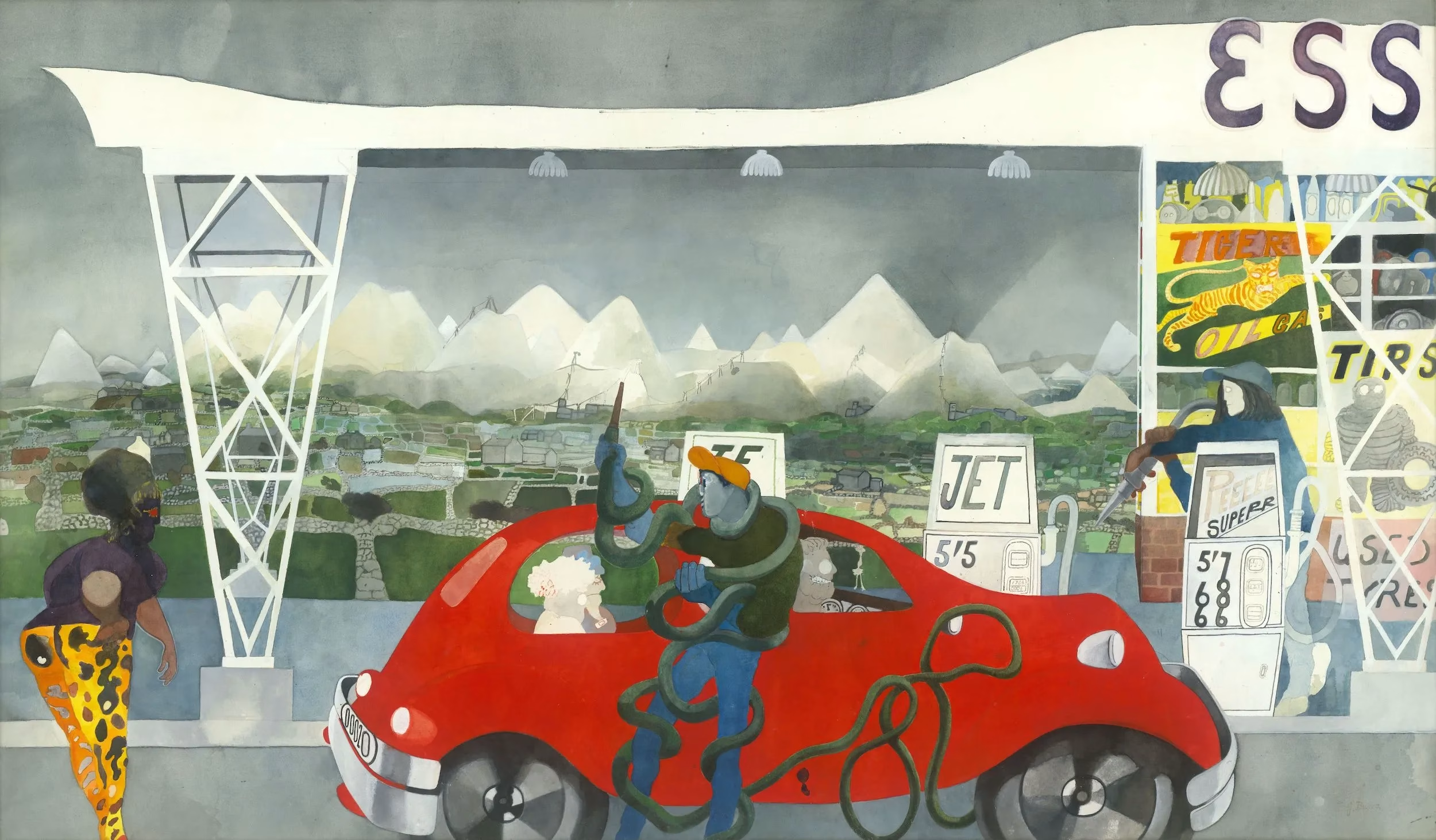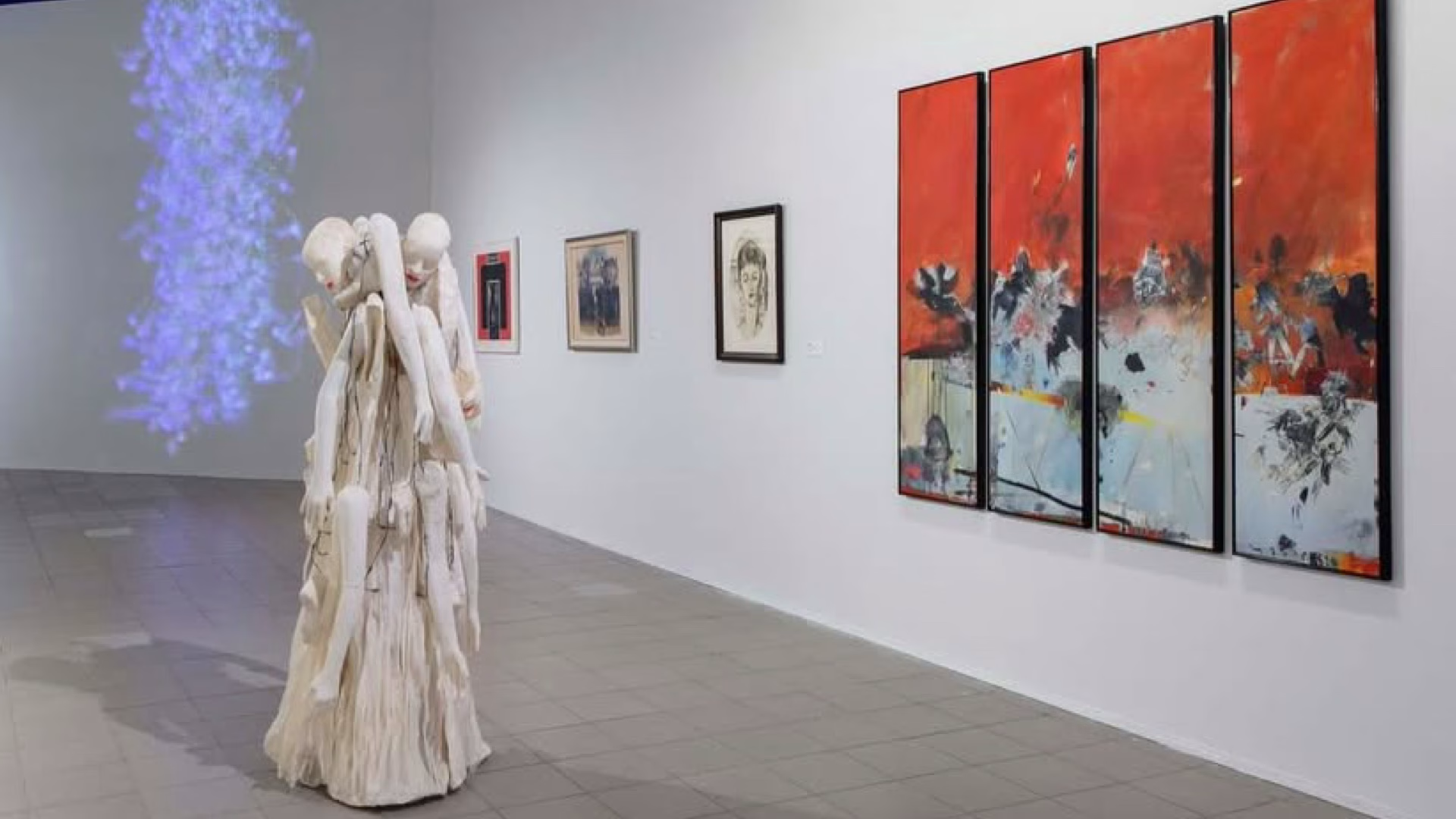Grappling with chronic illness, English painter Edward Burra (1924–2005) spent much of his life escaping the confines of his upbringing. Hailing from the upper classes of southern England and appearing refined, he yearned to experience the “shock of the strange” and embrace the “allure of the immoral, forbidden, and unapproved.” This pursuit led him to disappear from home for months without notice, traveling first to Paris, then to Spain, the United States, and Mexico.
A Canvas of Music, Speed, and Rebellion
As you explore the chronologically arranged Tate Britain exhibition showcasing Burra’s finest works, the echoes of the jazz music he adored linger in the air. In one section, black vinyl records and ephemera line the walls, evoking the profound impact of Harlem’s vibrant scene on the artist.
Burra’s paintings, much like the man himself, swiftly break away from tradition and respectability. Many are teeming with crowded figures, where you can almost smell the sweet sweat, feel the dizzying excitement, and sense the wild curves. The figures’ limbs often bend pneumatically, as if inflatable. Fingers are elongated and rubbery. Facial features are compressed into inhuman, mask-like forms, so heavily made-up that it’s hard to discern where the fantasy of their poses begins and ends.
Humor, Eroticism, and the Shadow of War
These beings, floating in Burra’s fantastical brushstrokes, thrive in sultry, late-night settings where alcohol spills from trays. Who lives within these dangerously curled-lip desires? This is fast-paced, erotic provocation laced with a touch of satirical surrealism. Burra revels in capturing the oddity of his people and scenes, and of course, he’s the one distorting it all. Take a close look at the bizarre faces in The Two Sisters (1929) or the parodic mistrust in Balcony Toulon (1929). In New York, he instantly fell in love with Harlem’s nightlife; Savoy Ballroom, Harlem (1934) brims with glorious embraces to savor.
Yet, amid the chaos, death, and turmoil of the Spanish Civil War, the mood and color palette of his paintings darken. Human figures become anonymous and mechanized. War casts a shadow over these works, as if we’re peering into open graves, transfixed by skeletons.
A Weary Return and a Lasting Legacy
Upon returning to England, Burra tries to respond to the industrial smoke and the grit of working-class street life. Thugs move together in scenes like tough performers. Yet, these later paintings seem to lack their former energy; the old vibrancy is gone. Burra no longer dives deep enough.
The Edward Burra exhibition at Tate Britain runs until October 19. Offering a chronological glimpse into the artist’s life, this exhibition provides a unique opportunity to reflect on the legacy of a painter who found beauty in the unconventional and the satirical.














